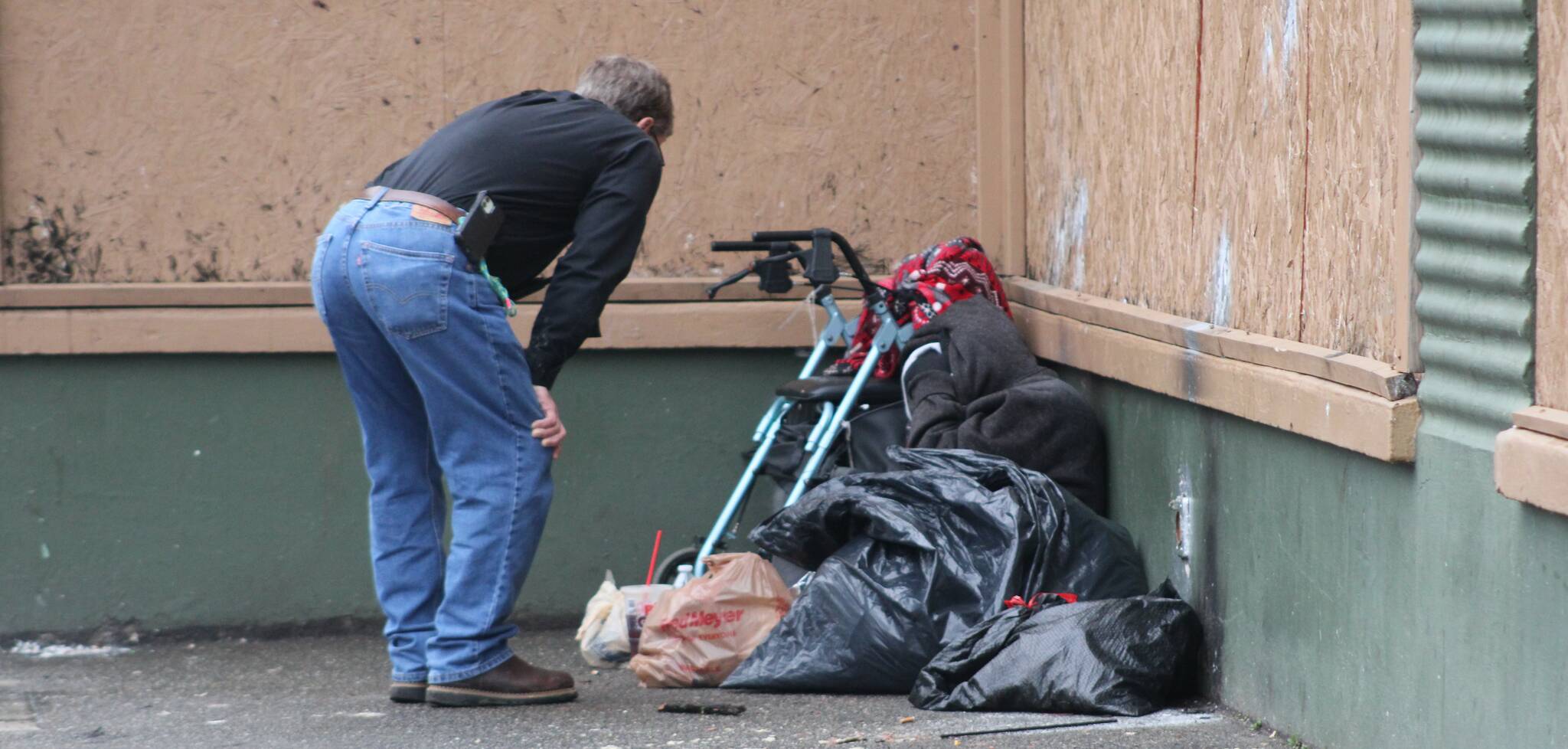Cheers erupted inside the Norm Dicks Government Center in the late hours of Jan. 17 after the Bremerton City Council heeded the words of its residents, voting 6-1 in favor of a hybrid homeless shelter that supporters say will maintain human dignity and safety.
The resolution includes a $1.3 million contribution from the 2024 city budget.
The proposal was introduced as an alternative option to the proposed 100-bed sprung congregate shelter on Oyster Bay Avenue. The partners are Kitsap Mental Health Services, Bremerton Housing Authority, Kitsap Community Resources and St. Vincent de Paul. A third proposal, introduced by Councilman Eric Younger, would have potentially allowed both options to move forward.
“Our vision, ultimately, is to create an intentional pathway to permanent housing,” KMHS CEO Monica Bernhard said, “one that incorporates elements of low-barrier shelter as it’s being proposed by the city but also incorporates transitional housing and permanent housing options.”
Bernhard said the key to addressing homelessness was to not think of it as a “one shoe fits all” as presented in the Oyster Bay model, but rather a crisis where the needs of those on the streets are various and broad. Such a mindset motivated the proposal, which includes a congregate shelter space with roughly half the capacity as Oyster Bay but also includes 40 pallet homes and room for expansion into private transitional space.
Tony Ives with KCR talked about collaboration efforts that have come about as a result of the proposal and the common question of whether it would be better to do the easy fix or the right fix. “We can be one of the models,” he said. “At this point, everyone is looking for innovation, not going backwards but going forwards.”
The lack of shelter space contributed to a homelessness crisis downtown last summer, and despite the early opening of the Salvation Army’s seasonal shelter space, several encampments remain on the outskirts of city limits. Many of those camps are visible, for example, to drivers on the Highway 303 commute between East Bremerton and Silverdale.
Councilmember Jane Rebelowski had two words for what she saw in the summer’s encampments: “severe suffering.”
“It was horrific what was happening to a lot of people on the street. People were dying down there; people were being trafficked down there; there were little children living in horrible conditions,” she said.
Community members showed overwhelming support for the hybrid option, imploring the council to trust the experts and not subject those who are already uncomfortable with the sole congregate shelter space to another potentially devastating environment.
“People who are homeless, they are suffering, ” said Julie Graves, “whether they’re suffering from an addiction or from mental illness or just from being homeless. Please, let’s put an end to that suffering and give them homes where they can close a door and feel safe.”
The council ultimately obliged, citing the potential for a cost-effective and humanizing solution. Councilmember Jeff Coughlin again expressed his concerns with the Oyster Bay site, calling the approach an uphill battle in comparison to the “best of both worlds” option.
“For the congregate, one single congregate shelter, you can add some cubicles and some dividers and divisions, but it still is a big single room,” he said. “Whereas the hybrid model really does suit that variety of needs with a combination of congregate and pallets.”



